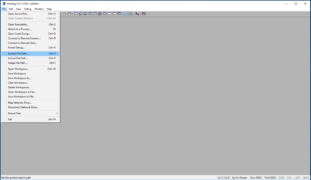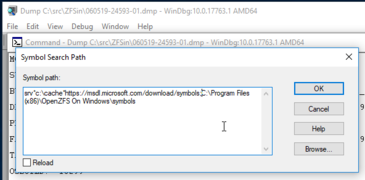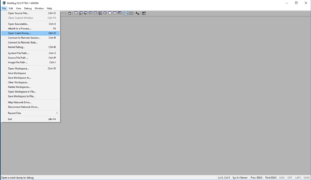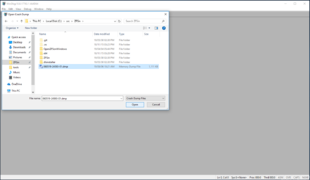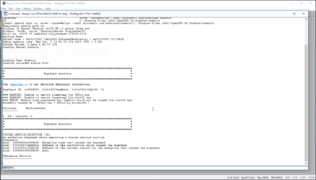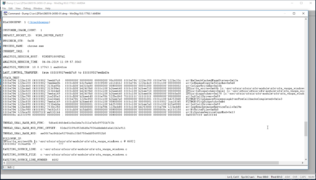Difference between revisions of "Windows BSOD"
m (→WinDbg.exe in the GUI) |
(→Debug Print Buffer) |
||
| (6 intermediate revisions by 5 users not shown) | |||
| Line 10: | Line 10: | ||
Debug builds of ZFSin include debugging symbols to assist in dump analysis which are located at: | Debug builds of ZFSin include debugging symbols to assist in dump analysis which are located at: | ||
| − | C:\Program Files | + | C:\Program Files\OpenZFS On Windows\symbols\ |
=== WinDbg.exe at the Command Line === | === WinDbg.exe at the Command Line === | ||
| Line 16: | Line 16: | ||
Once installed, WinDbg.exe can be run from a CMD.com or PowerShell terminal with Administrative privileges: | Once installed, WinDbg.exe can be run from a CMD.com or PowerShell terminal with Administrative privileges: | ||
| − | WinDbgX.exe -y ‘C:\Program Files | + | WinDbgX.exe -y ‘C:\Program Files\OpenZFS On Windows\symbols\’ -z C:\Windows\MEMORY.DMP |
This will launch the application and you can perform dump analysis with: | This will launch the application and you can perform dump analysis with: | ||
| Line 24: | Line 24: | ||
To run the analysis in a single command: | To run the analysis in a single command: | ||
| − | WinDbgX.exe -y ‘C:\Program Files | + | WinDbgX.exe -y ‘C:\Program Files\OpenZFS On Windows\symbols\’ -z C:\Windows\MEMORY.DMP -c !analyze -v |
=== WinDbg.exe in the GUI === | === WinDbg.exe in the GUI === | ||
| − | Launch WinDbg.exe and set the | + | Launch WinDbg.exe and set the symbol path: |
| − | + | kd> .symfix c:\cache | |
| − | + | kd> .sympath+ C:\Program Files\OpenZFS On Windows\symbols | |
| + | kd> .reload | ||
So that it can load both the symbols from Microsoft, and from the installed Open ZFS directory. | So that it can load both the symbols from Microsoft, and from the installed Open ZFS directory. | ||
| Line 73: | Line 74: | ||
Windows features a circular debug print buffer which can also be written to disk: | Windows features a circular debug print buffer which can also be written to disk: | ||
| − | + | Old | |
| − | + | ||
| − | + | kd> .writemem C:\Users\<your Windows username>\Desktop\cbuf.txt poi(ZFSin!cbuf) L100000 | |
| − | kd> .writemem C:\Users\<your Windows username>\Desktop\cbuf.txt | + | New |
| + | |||
| + | kd> .writemem C:\Users\<your Windows username>\Desktop\cbuf.txt poi(OpenZFS!cbuf) L100000 | ||
Do not worry if you get a message about short write, it just means you have not yet filled the buffer. | Do not worry if you get a message about short write, it just means you have not yet filled the buffer. | ||
Latest revision as of 02:50, 15 October 2023
Contents
Windows Crash Dumps[edit]
If you do managed to get a Blue Screen Of Death (BSOD), Windows should in theory write a crash dump file to:
C:\Windows\MEMORY.DMP
The dump file can be analyzed with WinDbg.exe
Debug builds of ZFSin include debugging symbols to assist in dump analysis which are located at:
C:\Program Files\OpenZFS On Windows\symbols\
WinDbg.exe at the Command Line[edit]
Once installed, WinDbg.exe can be run from a CMD.com or PowerShell terminal with Administrative privileges:
WinDbgX.exe -y ‘C:\Program Files\OpenZFS On Windows\symbols\’ -z C:\Windows\MEMORY.DMP
This will launch the application and you can perform dump analysis with:
kd> !analyze -v
To run the analysis in a single command:
WinDbgX.exe -y ‘C:\Program Files\OpenZFS On Windows\symbols\’ -z C:\Windows\MEMORY.DMP -c !analyze -v
WinDbg.exe in the GUI[edit]
Launch WinDbg.exe and set the symbol path:
kd> .symfix c:\cache kd> .sympath+ C:\Program Files\OpenZFS On Windows\symbols kd> .reload
So that it can load both the symbols from Microsoft, and from the installed Open ZFS directory.
Open the crash dump file with:
File: Open crash dump C:\Windows\MEMORY.DMP
Perform the analysis:
kd> !analyze -v
Should at least show the stack.
Set symbol path
Add path
Load crash dump
Locate minidump
minidump loading
analyze with stack
Example Crash report[edit]
A successful crash dump would look something like:
ZFSin!zfs_range_lock_reader+0x290 [c:\src\zfsin\zfsin\zfs\module\zfs\zfs_rlock.c @ 417] C/C++/ASM ZFSin!zfs_range_lock+0x16d [c:\src\zfsin\zfsin\zfs\module\zfs\zfs_rlock.c @ 453] C/C++/ASM ZFSin!zil_lwb_commit+0x99f [c:\src\zfsin\zfsin\zfs\module\zfs\zil.c @ 1570] C/C++/ASM ZFSin!zil_process_commit_list+0x30e [c:\src\zfsin\zfsin\zfs\module\zfs\zil.c @ 2182] C/C++/ASM ZFSin!zil_commit_writer+0x111 [c:\src\zfsin\zfsin\zfs\module\zfs\zil.c @ 2318] C/C++/ASM
If you get only ZFSin+0x"hex-number" it means it is not reading the debug symbols correctly, to be able to convert the hex-number into a function name.
Debug Print Buffer[edit]
Windows features a circular debug print buffer which can also be written to disk:
Old
kd> .writemem C:\Users\<your Windows username>\Desktop\cbuf.txt poi(ZFSin!cbuf) L100000
New
kd> .writemem C:\Users\<your Windows username>\Desktop\cbuf.txt poi(OpenZFS!cbuf) L100000
Do not worry if you get a message about short write, it just means you have not yet filled the buffer.
This will include -EB- at the end of the buffer. Do not worry if the rest of the buffer has "@" (nul) symbols, it just means the buffer was not yet full.
Please provide the contents of the dump analysis and cbuf.txt in you ZFSin in your crash-related tickets.
